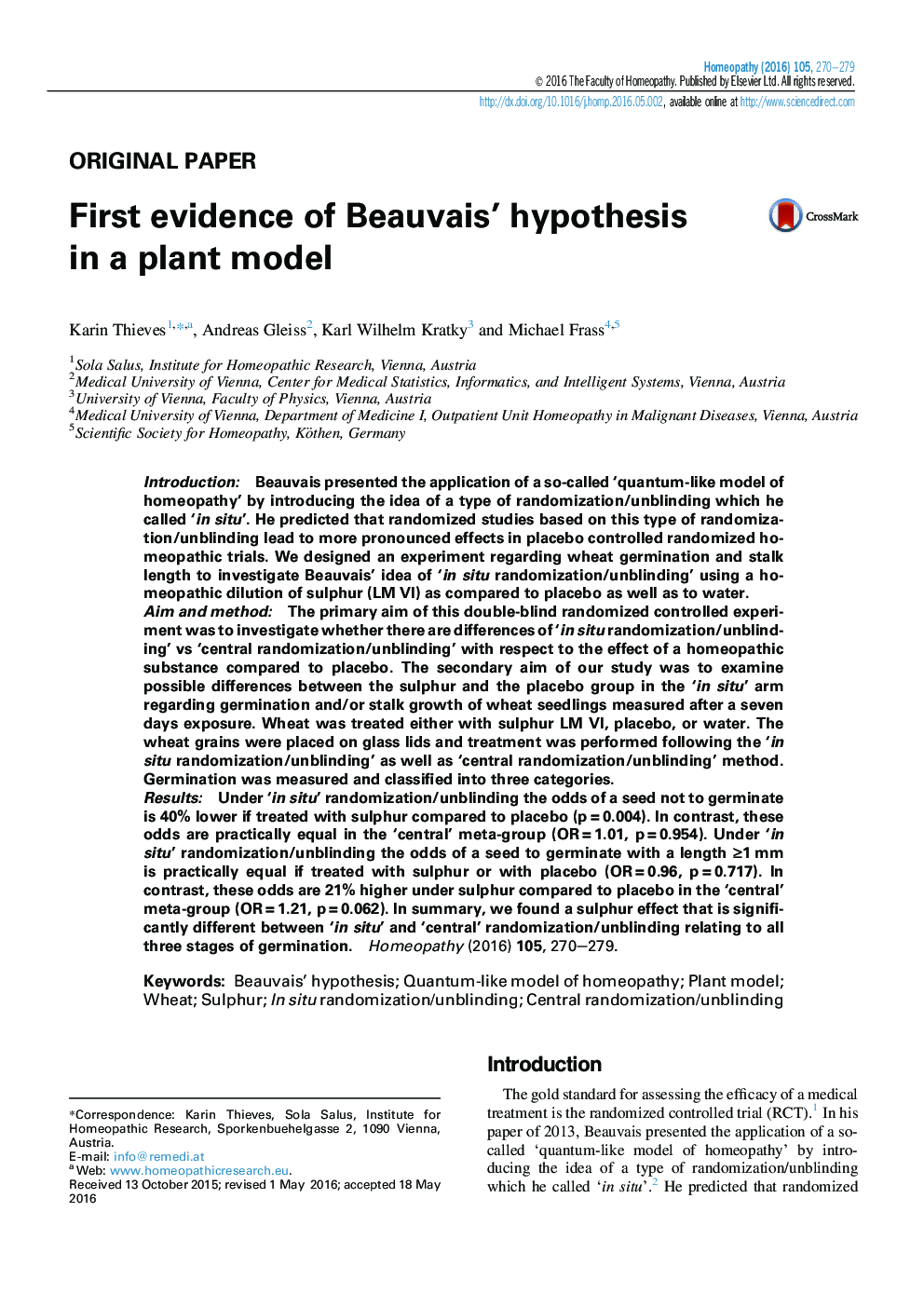| Article ID | Journal | Published Year | Pages | File Type |
|---|---|---|---|---|
| 2629635 | Homeopathy | 2016 | 10 Pages |
•We present a plant model investigating evidence of Beauvais' hypothesis.•We examined differences of ‘in situ randomization/unblinding’ vs ‘central randomization/unblinding’.•Wheat was treated either with sulphur LM VI, placebo, or water.•We found a sulphur effect that is significantly different between the two ways of randomization/unblinding.
IntroductionBeauvais presented the application of a so-called ‘quantum-like model of homeopathy’ by introducing the idea of a type of randomization/unblinding which he called ‘in situ’. He predicted that randomized studies based on this type of randomization/unblinding lead to more pronounced effects in placebo controlled randomized homeopathic trials. We designed an experiment regarding wheat germination and stalk length to investigate Beauvais' idea of ‘in situ randomization/unblinding’ using a homeopathic dilution of sulphur (LM VI) as compared to placebo as well as to water.Aim and methodThe primary aim of this double-blind randomized controlled experiment was to investigate whether there are differences of ‘in situ randomization/unblinding’ vs ‘central randomization/unblinding’ with respect to the effect of a homeopathic substance compared to placebo. The secondary aim of our study was to examine possible differences between the sulphur and the placebo group in the ‘in situ’ arm regarding germination and/or stalk growth of wheat seedlings measured after a seven days exposure. Wheat was treated either with sulphur LM VI, placebo, or water. The wheat grains were placed on glass lids and treatment was performed following the ‘in situ randomization/unblinding’ as well as ‘central randomization/unblinding’ method. Germination was measured and classified into three categories.ResultsUnder ‘in situ’ randomization/unblinding the odds of a seed not to germinate is 40% lower if treated with sulphur compared to placebo (p = 0.004). In contrast, these odds are practically equal in the ‘central’ meta-group (OR = 1.01, p = 0.954). Under ‘in situ’ randomization/unblinding the odds of a seed to germinate with a length ≥1 mm is practically equal if treated with sulphur or with placebo (OR = 0.96, p = 0.717). In contrast, these odds are 21% higher under sulphur compared to placebo in the ‘central’ meta-group (OR = 1.21, p = 0.062). In summary, we found a sulphur effect that is significantly different between ‘in situ’ and ‘central’ randomization/unblinding relating to all three stages of germination.
